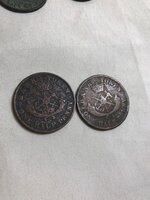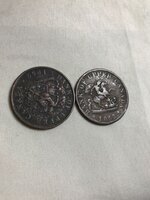Beachkid23
Silver Member
I have a bunch of coins from Canada that I I know very little about. when I take pictures of them and then flip them over the same way ones upside down in the ones right side up is that like an inverted something or another? Every single one flips right side up when you flip it over except for one is upside down when you flip it over. These are both from 1852. Showing a picture of the front and back.














